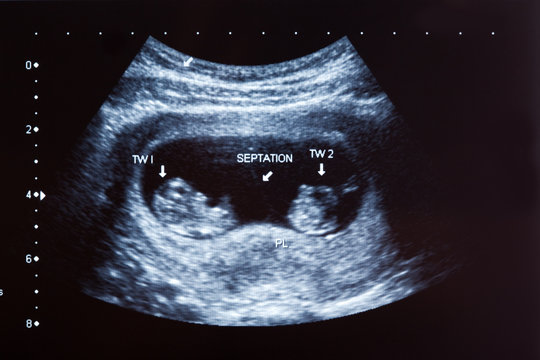Vanishing Twin Syndrome (VTS) is exactly as the name suggests: one of the two children in a set of twins vanishes. It usually occurs during the first trimester of the pregnancy, and can sometimes be mistaken for a miscarriage. The cause of the syndrome is unknown, but some possibilities have yet to be eliminated such as a small placenta or older age of the mother. Fortunately, the complications during the actual birth are limited or nonexistent at all. The earlier the twin vanishes, the less likely there are to be complications in the pregnancy or during birth.
There is still one baby remaining. What happens to the surviving twin? For the most part, the surviving twin is brought into the world without any harm done. However, there are some cases in which VTS could be the culprit to different outcomes for the twin.
A 2017 study published in Fertility and Sterility from the American Society for Reproductive Medicine showed that survivors of VTS had a higher risk for lower birth weight. This is likely because the death of one twin leads to a decreased blood supply for the other, which can harm the baby’s size and development in some cases.
While lower birth weight is usually not an incredibly serious issue, one of the more concerning possible effects of VTS is brain damage. A study published in Twin Research and Human Genetics titled “Vanishing Twin: A Possible Cause of Cerebral Impairment,” found some correlation between cerebral impairment and VTS. Causation, however, couldn’t be established partly because of a small sample size, as generalizations cannot be made about an entire case by observing a small group. The data did show a noteworthy association between brain damage and VTS but claimed more research is needed.
So, that’s exactly what happened. In 2016, a literature review published in Twin Research and Human Genetics titled “Fetal Brain Injury in Survivors of Twin Pregnancies Complicated by Demise of One Twin: A Review,” discussed a specific condition concerning brain injury of the surviving twin not specific to VTS: Single Intrauterine Fetal Demise (sIUFD). sIUFD can cause a number of outcomes including early delivery, pulmonary hypoplasia (a condition where the lungs are small and underdeveloped), necrotizing enterocolitis (a condition where the intestine tissue is inflamed), long-term neurological complications, or neonatal death. While fairly rare, the risk according to the data is 7.5 percent for monochorionic twins — who share a placenta but not an amniotic sac — versus three percent for diamniotic twins — that each has their own placenta and amniotic sac. This is likely because the vanishing of one twin impacts the placenta that the surviving twin is also sharing. In VTS, the risk for this condition to a surviving twin is six percent, though existing data doesn’t show whether or not being a VTS survivor and monochorionic puts the survivor at maximum risk. While quite rare, it is still notable and worth considering in further research. With a gap in the literature studying this topic, it’s important to stress that there may be a lot of unknowns and unanswered questions.
One common question is how conditions like these can be treated or cured. A treatment called fetoscopic laser ablation was suggested by the 2016 study, but it is noted that there isn’t much concrete evidence of a strong effect. In this treatment, a small camera locates damaged blood vessels and seals them with a laser while not being very invasive. Another option suggested in this study was to perform a “selective termination” to save the healthy twin if something like VTS is noticed early enough. This can prevent massive acute exsanguination, or blood loss, a cause of brain injuries in the surviving twin if the condition progresses for too long. VTS and its relationship to brain injuries is a very unexplored topic in the science of pregnancy and its potential conditions. Are there any other health conditions that persist in the long term due to things like sIUFD? Does head damage impact childhood development? These are just some of the questions that can point to future research. However, for now, it seems the mystery behind cases of brain damage in the surviving twin from VTS will remain.
Fertility and Sterility (2007). DOI: 10.1016/j.fertnstert.2007.06.048
Journal of Human Reproductive Sciences (2019). DOI: 10.4103/jhrs.JHRS_127_18
Twin Research and Human Genetics (2012). DOI: 10.1375/twin.10.1.202






